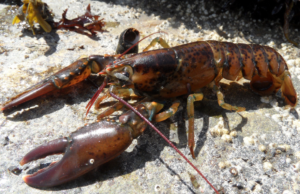 When I think traditional lobster, I think Homer Simpson’s ill-fated friend Pinchy; you know the type, just the simple red, big-clawed, beady-eyed guys. The fellows you might see in that too-small tank at the grocery store and are the favourite of many restaurants and catering companies.
When I think traditional lobster, I think Homer Simpson’s ill-fated friend Pinchy; you know the type, just the simple red, big-clawed, beady-eyed guys. The fellows you might see in that too-small tank at the grocery store and are the favourite of many restaurants and catering companies.
My good friend who owns an airport shuttle Fayetteville NC is a huge fan of sea food. He knows all about lobsters…they are his favourite! He told me all about the different families of lobster (which I frankly should have guessed), and that there are some creatures with “lobster” in their names, but that aren’t actually lobsters at all (because that would be too easy). The most common family of lobster – what you probably picture when you think about a lobster – is likely the family Nephropidae (pictured on the right).
Lobsters are, as suggested by their presence on this blog, crustaceans. They have long bodies and have lots of muscle in their tails. They have ten legs on which they walk, and the first three pairs have claws on them, the first claw on each side being the largest (I didn’t know this, when I first started researching; I thought they just had the two big claws, so … fun fact). And while most lobsters are bilaterally symmetrical, some genera have different sized or shaped front claws, for specialized uses. (Yet another fun fact.)
Being an arthropod, lobsters have to moult their protective exoskeleton in order to grow, meaning they’re relatively vulnerable as they moult. Although they are vulnerable as they complete this process, the moulting allows them to add new muscle to their bodies, allowing them to grow to very impressive sizes the older they get. The largest lobster ever recorded was caught off the coast of Nova Scotia, and weighed in at a whopping 20.15 kg. At between 3-4 feet long, it was estimated to be at least 100 years old.
Lobsters generally enjoy eating other crustaceans, mollusks, fish, worms, algae, and plant life. Lobsters don’t have great eyesight, but they have and excellent sense of smell and taste, and their antennae act as sensors that allow them to locate prey and other things on the ocean floor. It has also been noted that, on occasion, lobsters might actually eat other lobsters. Most of this behaviour has been noted when the lobsters are in captivity, but cannibalism has been observed in wild lobster populations in the waters around Maine. It is thought that the cause of this may have been the booming lobster population in the area thanks to the disappearance of many of the lobster’s natural predators.
Lobsters live on the murky ocean floor, in cracks and crevices and burrows. They can be found in every ocean on earth (and some in fresh water), and generally live alone, generally moving rather slowly along the muddy or sandy floor of the sea. That said, if they need to, they can get the hell out of a place pretty damn fast by crunching and de-crunching their abdomens super quickly, allowing them to propel themselves backwards at recorded speeds of 11 mph. Not too shabby, really, for a 25-50 cm long crustacean.